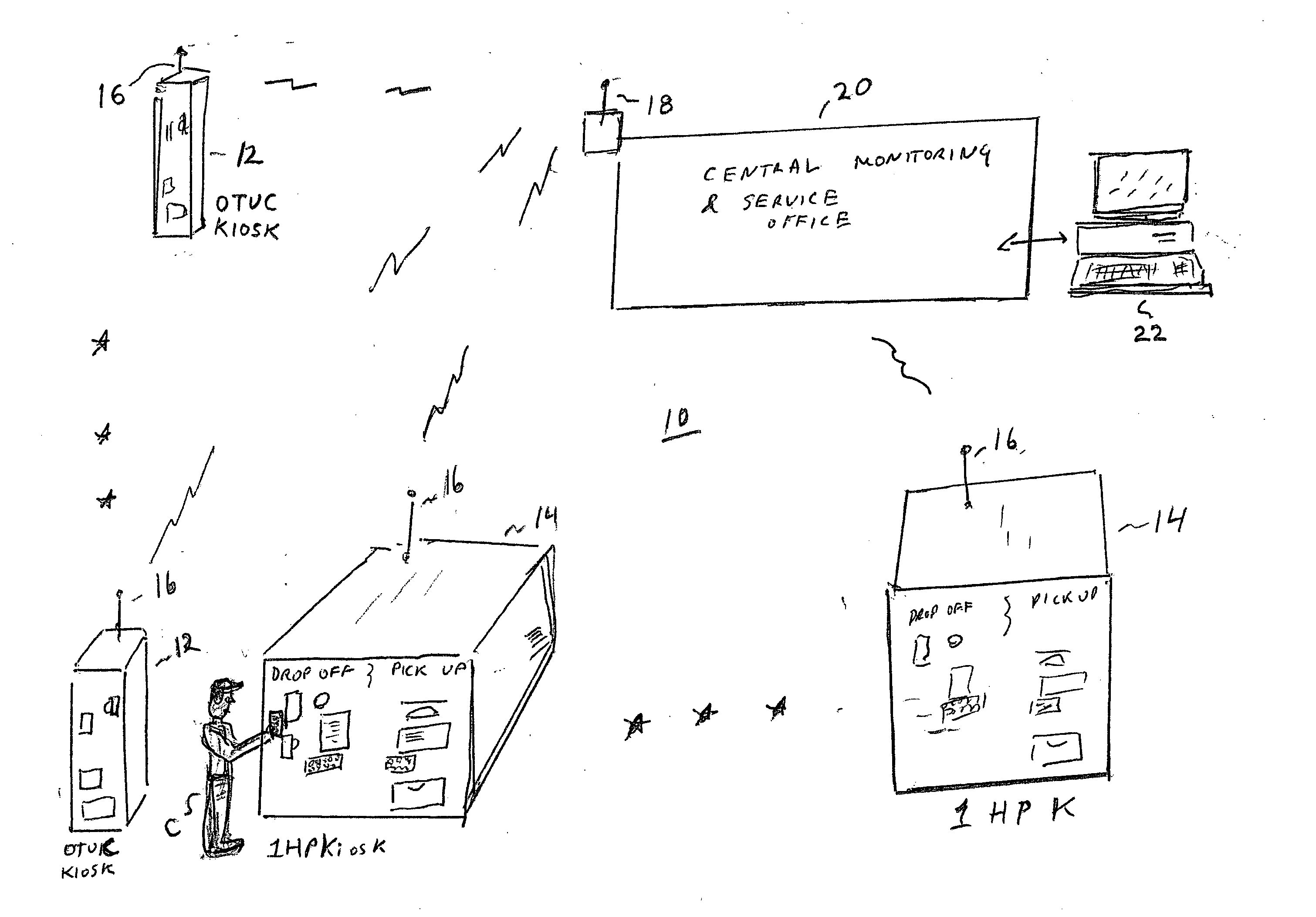Automated film processing kiosk system
- Summary
- Abstract
- Description
- Claims
- Application Information
AI Technical Summary
Benefits of technology
Problems solved by technology
Method used
Image
Examples
Embodiment Construction
[0027] Now with reference to the Drawing, FIG. 1 represents the overall equipment and connectivity of a photo-film and photo-processing demand point-of-sale system 10 according to an embodiment of the present invention. Here is shown a multiple-kiosk sales and management system 10, in which there are one or more automated film and / or OTUC kiosks 12, 12 located at various places where customers are likely to need film or one time use cameras, such as at a tourist attraction or amusement park. There are also one or more automated film processing kiosks 14, 14 at which a customer C may deposit a roll or cartridge of exposed film for processing, or may insert a one time use camera on which the film has been exposed. This kiosk 14 will accept the film or OTUC, accept a form of identification and form of payment from the customer C, and later have the finished photographic prints of the images on the customer's film available for the customer C to pick up. These kiosks 14 have a rapid pro...
PUM
 Login to View More
Login to View More Abstract
Description
Claims
Application Information
 Login to View More
Login to View More - R&D
- Intellectual Property
- Life Sciences
- Materials
- Tech Scout
- Unparalleled Data Quality
- Higher Quality Content
- 60% Fewer Hallucinations
Browse by: Latest US Patents, China's latest patents, Technical Efficacy Thesaurus, Application Domain, Technology Topic, Popular Technical Reports.
© 2025 PatSnap. All rights reserved.Legal|Privacy policy|Modern Slavery Act Transparency Statement|Sitemap|About US| Contact US: help@patsnap.com



